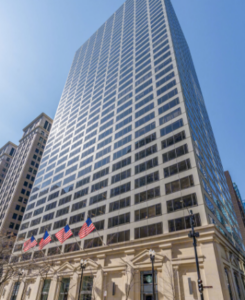Burn Injury Attorneys

Burn Injury Attorneys
Severe burn injuries lead to not just intense physical pain, but also extreme emotional consequences when burns result in significant disfigurement.
The road to recovery is often neither easy nor affordable. Burn victims may undergo extremely costly medical procedures, such as skin grafts or reconstructive plastic surgeries. Furthermore, the extent of some burns can prevent victims from being able to maintain regular employment. In these cases, burn injury victims can benefit from the experience of a qualified burn injury lawyer who will help them get the compensation they need to recover.
Retain a Burn Injury Lawyer
Serious burns can cause permanent nerve damage, organ failure, or even death. If you suffered serious burns or your loved one was killed as the result of burn injuries due to another party’s negligence, it is in your best interest to quickly seek legal representation. Susan E. Loggans & Associates represents clients with all kinds of catastrophic injuries, including burn injuries.
Susan E. Loggans is an experienced personal injury lawyer who can hold all responsible parties accountable. She can provide a complete evaluation of your case when you call (312) 201-8600 to schedule a free, no-obligation consultation.
Susan E. Loggans & Associates provides legal services on a contingency-fee basis, so you will not be charged anything unless you receive a monetary award.
Overview of Chicago Burn Injury Lawyer
Types of Burn Injuries
Common Causes of Burn Injuries
Filing Burn Injury Claims
What to Do After a Burn Injury
Find the Right Burn Injury Lawyer
Types of Burn Injuries
The four most common types of burns people suffer in the Chicagoland area are thermal burns (burns caused by hot liquids), scalding burns (burns from contact with a flame or heated objects, electrical burns (caused by electricity), and chemical burns (caused by strong acids or corrosive compounds).
Superficial Burns
Also known as first-degree burns, these burns affect the outermost layer of skin (epidermis). Superficial burns are red and tender, but the skin appears largely intact except for redness and swelling. These burns usually heal within a matter of days and, as a rule, do not leave a scar.
Partial Thickness Burns
Also known as second-degree burns, these burns involve the epidermis and part of the underlying dermis (the layer of skin between the epidermis and the subcutaneous tissue layer containing fat, blood vessels, and nerves). These burns can lead to blisters and discolored skin.
Fourth-Degree Burns
These burns extend down through all layers, including the subcutaneous tissue down to the deeper structures like muscle and bone.
Full Thickness Burns
Also known as third-degree burns, full-thickness burns are severe burn injuries that extend down through the entire dermis layers, and sometimes into the underlying subcutaneous tissues (where the fat, nerves, and blood vessels are). The burned dermis is often intact and forms a pale waxy white to gray leathery covering called an eschar.
Characteristically, the full-thickness burn has little or no feeling due to nerve damage and does not blanch when pressure is applied. Scar formation is the rule, and larger burns will not heal without surgical grafting. If left alone, these injuries can worsen and become life threatening.
Common Causes of Burn Injuries
People may be seriously burned due to any number of reasons, including as a direct or indirect result of another party’s negligence.
The three most common types of burn accidents are thermal burns/scalding burns (caused by heat), electrical burns (caused by electricity), and chemical burns (caused by strong acids or corrosive compounds).
Some of the most common causes of burn injuries include, but are not limited to:
- Car accidents
- Aviation accidents
- Chemical spills
- Construction accidents
- Defective products
- Electrical fires
- Explosions
- Helicopter accidents
- Nursing home negligence
- Premises liability
- Toxic torts
- Workplace accidents
Filing Burn Injury Claims
People requiring several months or possibly years to recover from burn injuries can be entitled to compensation for all of their medical costs, lost wages, and other types of damages.
In burn injury lawsuits, victims must file claims against the party or parties they consider to be responsible for their injuries. In order to be awarded compensation, victims must prove to the court that the responsible party: 1.) directly or indirectly lead to injuries due to negligence or malice and 2.) the injuries lead to severe damages, including financial, physical, and emotional ones.
Burn Injury Case Damages
After receiving a winning verdict, the court may grant victims fair compensation for damages resulting from their injuries.
Damages can include:
- Loss of future earning capacity
- Lost income while recovering
- Pain and suffering
- Decrease in quality of life
- Disfigurement
- Medical bills
- Loss of consortium
What to Do After a Burn Injury
Burn injury victims who believe that their serious burn injury is the result of someone else’s negligence or malice is advised to:
- Collect video or photo evidence of the accident or of the injury itself, if possible.
- Document all medical expenses and other financial burdens related to the injury.
- Keep non-financial records of medical treatment.
- Not talk to insurance companies until you retain a lawyer.
- Seek the help of an experienced law firm who can help you secure a winning verdict.
- Not delay in contacting an attorney to avoid statute of limitations issues.

Find an Experienced Burn Injury Lawyer with Susan E. Loggans & Associates
Did you sustain severe burn injuries or was your loved one killed as the result of burns caused by another party’s negligence? You will want to retain legal counsel as soon as possible. Contact Susan E. Loggans & Associates today.
Chicago personal injury attorney Susan E. Loggans helps victims get the financial compensation they deserve. Call (312) 201-8600 or fill out an online contact form below to have our lawyer review your case and answer all of your legal questions during a free case evaluation.
